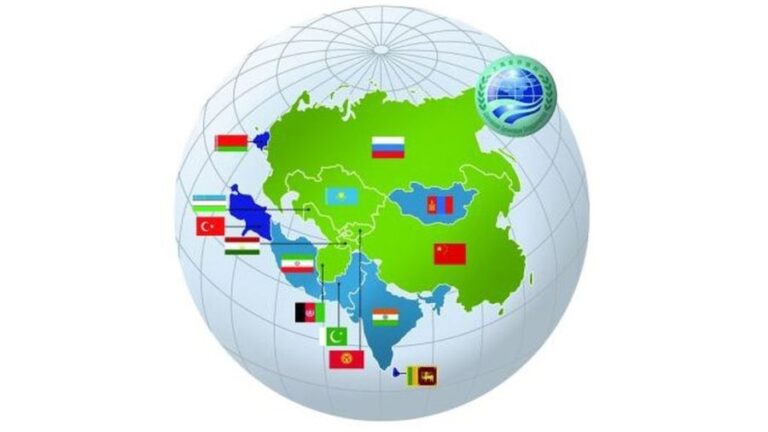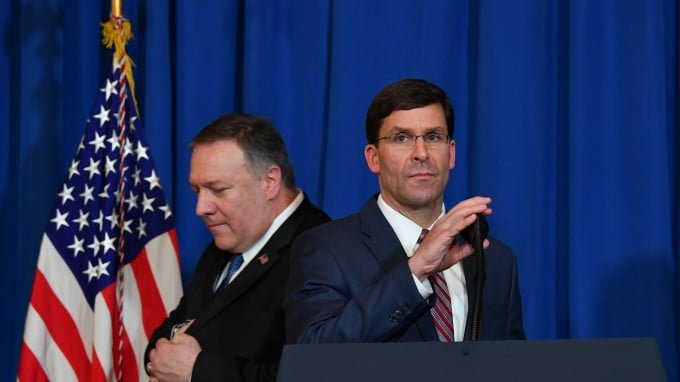Japan is Seeking Balance in its Relations with the US, China and Russia
The sudden burst in Japanese foreign policy efforts over the last few months cannot go unnoticed. It is hard not to note Tokyo’s attempts to influence and probe the state of its relations with Washington, Beijing and Moscow. It is worth mentioning that the political landscape in the critically important North East Asia sub-region are shaped by these four capitals.
In the meantime, there have been fairly noteworthy developments in their relations, prompted by a radical change in Indo-Pacific’s political puzzle.
These changes have been long in the making but accelerated abruptly with the election of Donald Trump to the post of US President with his slogan America First. Initially, during the electoral process, this motto almost completely reflected the views expressed by part of the US elite, labelled as “neo-isolationists” (and matched the mood of at least half the US population, as it became clear later on). Still, in practice, the message behind this slogan was diluted by the prevailing expansionist tendencies.
Nevertheless, the neo-isolationist nature of the motto directed at the politicians’ world by the world leader could not but result in cracks in the structure, up to date termed as the “West”.
The fractures also appeared in one of its main support elements, known as the military and political alliance between the USA and Japan, still there are no immediate signs of its complete demise. On the contrary, the fundamental nature of this alliance is reiterated publicly in every possible way.
Still, from the author’s viewpoint, this begs the question “But in whose name?”. Just as in the trans-Atlantic relations, in which attempts to blow the “Russian threat” motivator out of proportion with the aid of completely grotesque and obscene incitements are being made,
in the relations between Japan and the USA, the aforementioned question stems from the military and political problems (connected, in large part, with the situation on the Korean Peninsula), and trade and commercial issues in the last few months.
Japan ended up on the sidelines of the game on the Korean Peninsula (of paramount importance to Tokyo), whose new phase began after the famous speech by Kim Jong-un, made on 7 January this year. This speech has seemingly come as a complete surprise to Tokyo (and most likely Beijing too), while, it is reasonable to assume that Washington (and possibly Seoul) remained well-informed because of its existing informal contacts with Pyongyang.
In fact, Washington continued the new game on the Korean Peninsula without its key ally in the region, who almost constantly reminded the US of its existence by entreating it to “increase the joint (together with Washington and Seoul) pressure” on Pyongyang with the aim of forcing it to abandon their nuclear weapon programme.
In addition, the Prime Minister Shinzō Abe was most likely unaware that during his penultimate meeting with Donald Trump held in the American President’s country club on 18 April, Michael Pompeo (then candidate for the Secretary of State position) was at a secret meeting in Pyongyang.
Meanwhile, one of the main aims of Abe’s visit was to clarify its key ally’s intentions on the Korean Peninsula and to ensure the US take the Japanese interests into account in this issue.
Another important variable is the more and more noticeable divergence in their bilateral relations in the spheres of trade and commerce, from their “overall nature” to their “constituent parts”. While the Trump administration has chosen to follow the course of bilateral trade and commercial ties with other countries (with credence to this stance added by the US withdrawal from the Trans-Pacific Partnership (TPP)), Japan prefers multilateral collaboration, thus practically “bringing” TPP “back to life”.
Washington’s soon-to-be-introduced tariffs on aluminum and steel as well as increasingly frequent discussions about taking similar measures with car imports can all be added to the “constituent parts” category. Japan will be among the countries primarily affected by this measure.
Based on the outcomes of the aforementioned meeting on 18 April, there has been little observably progress thus far in the attempts to draw the positions of the two key allies in the Asia Pacific region closer together on the two issues (currently dividing them).
The next attempt will be taken on 7 June, when Abe visits the USA again. The meeting will occur on the eve of the G7 summit, which will be held in Canada this time around, and five days before the meeting between Donald Trump and Kim Jong-un in Singapore.
The tendency towards an improved political climate in the Japan-PRC relations is remarkable and especially noteworthy considering the serious problems that the relations between the US and Japan face. For the first time in the last eight years, PRC’s Premier Li Keqiang was in Tokyo from 9 to 11 May, where he discussed with his South Korean and Japanese colleagues the prospects of creating free trade zones such as “PRC-Japan-South Korea”, as well as “10 ASEAN countries+PRC, Japan, South Korea, India, Australia and New Zealand”. The idea of Japan joining the New Silk Road (NSR) imitative was also probed.
All three participants of the Tokyo meeting expressed negative views towards protectionist trends and voiced their support for the globalization of the world economy.
As far as Japan’s growing interest towards Russia is concerned, its levels often diminish and then amount to the so-called Northern Territories dispute, which refers to Tokyo’s ongoing claims to the Southern Kuril islands. This underlying driver and an integral part of the Japanese political story explains the increased contact between Abe and the President of the Russian Federation, Vladimir Putin.
However, from the author’s point of view, as Japan gradually transforms from “an economic giant but a political dwarf” into an important and independent political actor, it is inevitably getting sucked into the complex political game played by the other leading actors.
The Japanese role in this game is starting to extend beyond the somewhat local Northern Territories dispute, and includes its evident rivalry with China in influencing Russia, with its key strategic position and a plethora of natural resources.
In turn, Russia is interested in improving cooperation with both PRC and Japan, and in avoiding involvement of its territories in the disagreements between China and Japan. Hence, it is important to encourage any positive trends that are emerging in the relations between Russia and Japan.
All the issues and problems facing the Russia-Japan relationship at the end of May again became the topic for discussion between Putin and Abe during the latter’s visit to the St. Petersburg Economic Forum.
At this juncture it is worth making some general statements concerning the trade and commercial sides in these relations. Unfortunately, at the moment, the bilateral trade volumes between Russia and Japan are simply miniscule,
and politics (the Northern Territories dispute) are not to blame for this state of affairs despite frequent and transparent remarks to the contrary from the Japanese side. The reasons for Japanese businesses’ lukewarm involvement in the Russian economy are objectively weather-related and subjectively institutional in nature.
As for these aspects Japan has (yet) more attractive targets for expanding its investments and technology. India’s growing political and strategic importance in the eyes of Tokyo makes it a particularly attractive place among its new targets, as previously discussed in the New Eastern Outlook (NEO). India has been building giant infrastructure projects that increasingly involve Japan.
Unlike Siberia, India is warm and boasts an abundance of cheap labor, which can be hired, figuratively-speaking, in exchange for “a plate of soup, and a spot on the grass to sleep on”. Furthermore, in the scope of his relations with foreign partners, Prime Minister Narendra Modi is in the process of bringing his policy course to life with its slogan “Come make in India”.
We cannot overcome Russia’s weather-related “drawbacks” that affect its competitiveness, but we are able to eliminate the institutional barriers (subjective in their nature) that businesses encounter en route to Russia from Japan, China, India, Germany etc. To accomplish this we can use Peter the Great’s strategy “All the flags will come to Russia”, which Modi is currently employing. Clearly, in this context “flags’ refer to nations who will not be intimated by the current political environment with accompanying sanctions created around our country.
It is worth reiterating that it is crucial that our “guests” refrain from bringing their squabbles along when they visit.







